


James Richard William Purves
(March 5, 1903 May, 13 1979) Australia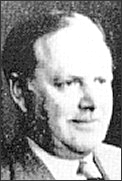
Purves was an internationally acclaimed philatelist and was Australia's greatest philatelist of all time. He dedicated more than half a century to Australian philately He formed many outstanding collections, most notably of Tasmania, Fiji and the Half Lengths of Victoria. He was called “The personification of Australia in International Philately.”
Purves wrote a number of books and many articles on all aspects of the stamps and postal history of Victoria during the 1950s and 1960s. His most famous book was The Half Lengths of Victoria (1953) for which he received the Crawford Medal in 1954. When he signed the Roll of Distinguished Philatelists in 1937, he was the youngest ever so-honored. The Collectors Club of New York made Purves an Honorary Life Member and presented him with the Lichtenstein Medal in 1960. He was named Honorary Life Fellow of the Royal Philatelic Society London in 1969, and of the Royal Philatelic Society of Victoria.
“Bill” had an enormous impact on Australian philately and was lauded for his activities in his own country. He led the effort and generously supported the acquisition of a permanent building for the Royal Philatelic Society of Victoria in 1957. It established the J.R.W. Purves medal in 1970 in his honor. He received the first award.
George Townsend Turner
(February 11, 1906 – August 14, 1979) Washington, DC
Turner was the leading philatelic bibliophile of his time, building the greatest philatelic library in private hands. He also was a noted expert, collector and writer on U.S. revenue stamps. His life-long interest in U.S. revenues led to his catalog, Essays and Proofs of United States Internal Revenue Stamps: A Compilation with Relative Prices (1974).
Turner's first interest in philatelic literature began in 1939 when he bought the library of William C. Stone, a pioneer collector of revenues. He soon had an opportunity to add to his library when the fabulous library of William R. Ricketts was sold in 1945. During the next two decades, Turner purchased nearly every important philatelic library to come on the market. He added them to his own library and sold the duplicates in a series of important auctions held by Sylvester Colby.
He was a curator of the philatelic collections of the Smithsonian Institution from 1958 to 1962. Turner bequeathed the large majority of his philatelic library to the Smithsonian where it now resides at the National Postal Museum.
When the Association for Stamp Exhibitions decided not to hold an International Philatelic Exhibition in 1966, Turner and Svend Yort decided to hold the Sixth International Philatelic Exhibition (SIPEX) in Washington, D.C. Turner was an active member in the Washington and Baltimore philatelic community and was president of the NAPEX organization.
He was Research Philatelist for the Bureau Issues Association (now the United States Stamp Society). In that capacity Turner compiled and edited the collection of George B. Sloane's columns in Stamps called Sloane's Columns (1961). At the time of his death, Turner was compiling and editing the material in the journal, Pat Paragraphs, written and edited by Elliott Perry. It was completed after his death by Thomas E. Stanton and published (1981) by the BIA (now the United States Stamp Society).
Turner joined the APS in 1933, and rarely missed a convention the rest of his life. He served on the APS Board of Directors for 28 years: as a director-at-large (1951-1961 and 1971-1975), vice-president (1961-1965), and international director (1967-1971 and 1975-1978).
Turner received the Luff Award in 1976 for Outstanding Service to the Society and the Lichtenstein Medal in 1976. Turner signed the Roll of Distinguished Philatelists in 1978.
Daniel W. Vooys
(July 22, 1914 – September 23, 1978) Canojaharie, New York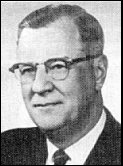
Vooys was called “Mr. Philatelic Literature” by George W. Linn, and this is an apt description of his philatelic life. Vooys founded the Philatelic Library Association (later called the Philatelic Literature Association) in 1942, and edited its journal, Philatelic Literature Review, from 1942 to 1956 and again from 1963-1970. (The PLR is now the official publication of the American Philatelic Research Library).
Vooys was an active collector and student of philatelic literature when he organized the Philatelic Library Association in May 1942. He also organized and edited its journal, Philatelic Literature Review for its entire first series (1942 to 1949).
Both the society and the journal proved so popular that in 1950 Dan Vooys reorganized the society and expanded its journal as a second series which continues today. Vooys was its first editor. In 1956, the society changed its name to the Philatelic Literature Association.
In 1967, the APS considered forming a philatelic library for use by its members. It was Dan Vooys who drew up plans for its organization. The American Philatelic Research Library was incorporated on October 28, 1968. In 1971, the Philatelic Literature Association merged with APRL, and Philatelic Literature Review became its official journal.
In 1970, Vooys gave the fledgling APRL a portion of his important philatelic library. He gave further portions from 1972 to 1975, and it formed the cornerstone of the APRL which moved into its own building in 1972.
Vooys was an APRL trustee from its beginning in 1968 to his death in 1978. He was APRL President from 1975 and died in office. In his memory, the APRL established the Daniel W. Vooys Fund which continues to this day in financially supporting the APRL
Vooys was APS President from 1969 to 1973. He was twice honored by the APS with the Luff Award - in 1956 for Exceptional Contributions to Philately and in 1978 for Outstanding Service to the Society.

William Ewart Gerrish
(June 18, 1898 – June 7, 1978) England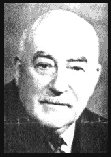
Gerrish was a famous collector of the stamps of the Netherlands and was an active participant in London philately. His collection of Netherlands was world famous, winning many international awards. He received the Tapling Medal of the Royal Philatelic Society London on two occasions, in 1955 and 1965, for his exhibits and lectures on Netherlands philately. He also built important collections of German States and South and Central America.
“Ebby” was active in the RPSL from the time he joined in 1942. He joined the society's Council in 1949, was vice-president in 1951, and president in 1956-1961. He served on its expert committee from 1952 to 1976. He was made an Honorary Life Fellow in 1969.
Gerrish chaired the organizing committee for the London International Philatelic Exhibition in 1960 and was chairman of the jury for London 1970. He signed the Roll of Distinguished Philatelists in 1958.
Dr. James J. Matejka Jr.
(October 27, 1916 – November 30, 1979) Chicago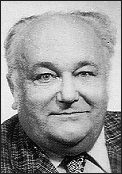
Dr. Matejka was an internationally-known philatelist who actively participated in the hobby at local, national and international levels. He built world-class collections of Newfoundland airmails and Czechoslovakia, and had a noted collection of Alaska-Yukon Territory postal history.
Matejka served in many Chicago philatelic activities. He was an organizer and director of the first five COMPEX shows (Combined Philatelic Exhibition of Chicagoland), beginning in 1958. These exhibitions bring together the many diverse stamp clubs in the philatelically-active Chicago area. Matejka received the Newbury Award from the Chicago Philatelic Society in 1959.
Matejka held offices in the Society for Czechoslovak Philately, the American Air Mail Society and the Society of Philatelic Americans. He served on the U.S. Postmaster General's Citizens' Stamp Advisory Committee three times - 1961-1963, 1965-1969 and 1975-1978. He was U.S. Commissioner and a frequent judge at international exhibitions. He signed the Roll of Distinguished Philatelists in 1979.
Ethel Bergstresser (Stewart) McCoy
(June 20, 1893 – August 17, 1980) New York City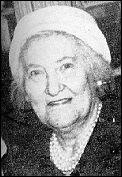
Ethel McCoy was an ardent stamp collector and philatelic activist. She formed many collections, most notable of which was her U.S. airmails. She was one of the earliest topical collectors.
She became a director of the American Air Mail Society in 1937, when few women held office in any philatelic organization. She was then known as Ethel B. Stewart (her first husband, Bert A. Stewart, died in 1936). In 1941 she married Walter R. McCoy, like her, an enthusiastic stamp collector and activist. They both belonged to many stamp societies and often provided special prizes for philatelic events. She was a director of the Essay-Proof Society for over 20 years.
The highlight of her U.S. Airmail Collection was a block of four of the 24-cent "inverted Jenny" (Scott No. C3a) which she acquired in 1936. The block was from positions 65-66, 75-76 of the original sheet of one hundred, and was one of the best centered of the few blocks in existence. It was stolen from her exhibit in the 1955 APS Convention in Norfolk, VA. In 1979, she transferred title to the stolen stamps to the American Philatelic Research Library. As of 2001, two stamps from the left side of the block (positions 65 and 75) have been recovered.
Charles P. de Volpi
(July 16, 1911 – November 24, 1981) Canada
De Volpi was a noted collector and student of Canadian stamps and postal history. He began collecting when he was twelve years old, and continued for the rest of his life. By 1950 he had concentrated on certain areas of Canadian postal history, most notably the Hudson's Bay Company, the North West Company of Western Canada and the fur trade from the mid-18th to the mid-19th century.
De Volpi was a founding member of the British North America Philatelic Society, serving in many capacities. He attended every BNAPS convention except the last one before his death.
Léon Dubus
(February 18, 1894 – October 19, 1981) France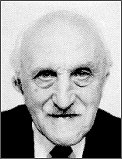
Dubus has been called the greatest philatelist that France ever produced. He built world-class and highly-awarded collections of France and Colonies. He also built important collections of Austria, Lombardy-Venetia and Switzerland.
Dubus was a frequent author on subjects covered by his collections. In the 1945-1949 period he wrote a series of monographs on the postal markings and cancellations of the French regions of la Manche, Pas-de-Calais, le Haute-Garonne, Nord and Var for the years 1698 to 1876. He co-authored, with P. Pannetier and A. Marchand, Les Correspondences des Colonies Française avec Timbres des Emissions Generales la Guadeloupe (1958).
Dubus was elected to l'Académie de Philatélie in 1932, and served as its president from 1964 until his death. He was a member and officer in other French philatelic societies and of the French Philatelic Federation. He served frequently as an international judge. Dubus signed the Roll of Distinguished Philatelists in 1957 and received the Lindenberg Medal in 1981.
Svend Yort
(November 24, 1908 – July 24, 1981) Maryland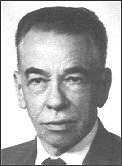
Yort was a noted collector, writer and expert on Scandinavian philately. He joined the Scandinavian Collectors Club of New York (later the Scandinavian Collectors Club) in 1944 and began writing and serving the society immediately. Yort was SCC president from 1967 to 1970.
He was a member of many national and local philatelic organizations, and served the Washington, D.C. area as president of the local clubs, chairman of NAPEX and chairman of the 1966 Sixth International Philatelic Exhibition (SIPEX).

Warren Howard Colson
(June, 10 1882 – October 1963) Boston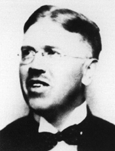
Colson was a famous specialist dealer in classic stamps, mainly U.S., Confederate States and Hawaii. For over half a century he bought and sold great rarities for his clientele consisting of the most famous collectors of his time. Colson began in the late 1890s as a partner in the New England Stamp Co., one of the largest and most influential stamp companies of the period. He left in 1906, forming his own company, Colson of Boston, and from the start bought and sold the great rarities.
In October 1906 Colson published a private monthly newsletter Postage Stamps for Advanced Collectors consisting of a dated calendar illustrating a rarity and a letter describing rarities for sale or items of interest about the state of philately. It continued for more than 50 years (Vol. 51 carries a 1956 date).
Colson wrote three books. They were Postage Stamps and Their Collection: Handbook No. 1, The Bowers Collection (1907), Colson of Boston - His Stamps (1926), and Colson of Boston and the Duckwall Collection (1919). Each one described and illustrated collections of U.S rarities he offered for sale. He helped form the outstanding U. S. collections of his time, most notably Caspary, Hind, Gibson, Ackerman, Lapham, and Boker.
“Colson of Boston” made a permanent impact on American philately. The mark “W.H.C.” on an item, or the statement “ex-Colson,” carries special meaning to advanced collectors.
Dr. Mohamed Dadkhah
(1910 – 1980) Iran
Dr. Dadkhah was the most renowned expert on the stamps of Iran and Bushire. He built outstanding collections of these countries, winning numerous international gold medals. His exhibit of Iran won a Grand Award at PHILYMPIA in London in 1970.
Dadkhah's book Emissions du Type “Lion” de l'Iran 1865-1879 (1960) was awarded the Crawford medal in 1961. This book also bears the English title, The Lion Stamps of Persia and is written in French, English and Farsi. Dr. Dadkhah was the founder and life president of the Iranian Philatelic Society. He signed the Roll of Distinguished Philatelists in 1965.
David Louis Lidman
(July 11, 1905 – September 18, 1982) Chicago, New York City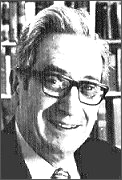
Lidman was America's greatest philatelic writer and editor. During his long philatelic career he edited journals, compilations, and books. He wrote philatelic newspaper columns nearly all his philatelic life. He also wrote many philatelic books, especially popular books on the pleasures of stamp collecting.
Lidman began his philatelic career in Chicago as editor and columnist. In the early 1940s, he wrote his first stamp column for the Chicago Sun. He also was managing editor of Chambers Stamps Journal, a popular journal published in Kalamazoo, MI. He was the founding editor of the short-lived journal Philately in 1946, published in St. Louis, MO. Lidman was also involved in the APS and Chicago philatelic activities. He received the first Newbury Award in 1945 from the Chicago Philatelic Society for his outstanding philatelic activities in Chicago. In 1946 he received the Luff Award from the APS for Outstanding Services to the Society.
In 1948, Lidman became a free-lance stamp collecting columnist for the New York Times, remaining there until 1972. He was editor of The American Philatelist from 1951 to 1960, serving as interim editor following the death of James Chemi in 1976.
Lidman edited many other publications: Essay-Proof Journal (1957–1963); The Congress Books (1956–1957). He also edited the 1851 Centennial Book (1951) and the U.S. Perforation Centennial Book (1956) published by the National Philatelic Museum in Philadelphia, PA. Lidman edited the original sections of the seminal book of L.N. and M. Williams, Fundamentals of Philately in The American Philatelist (1954–1963), and later in book form (1971). Maurice Williams related how Lidman had conceived the idea of such an important work and badgered him and his brother to do the project.
Lidman wrote Philately Below Zero, A Postal History of Alaska (1958), and The First Day Cover Collector's Handbook (1976). He is most noted for his popular books on stamp collecting: The New York Times Guide to Collecting Stamps (1970); Treasury of Stamps: 1200 Rare and Beautiful Stamps in Color (1975); The World of Stamps and Collecting (1981) (with John Apfelbaum).
Lidman was a founder of the APS Writers Unit 30 and was its first president (1967–1969). In 1971, it presented him its first medal in recognition "of his many years of outstanding service to philately." He was elected to the Writers Hall of Fame in 1981.
He was a member of the Postmaster General's Citizens' Advisory committee in 1961 and was its chairman from 1962 to 1969. He served as an APS Vice-president (1979–1980); he was president of the Board of Trustees of the American Philatelic Research Library.
In 1971, Lidman was presented the APS Gold Medal for outstanding contributions to the society, one of only four that have been given.

George E. Hargest
(August 26, 1906 – February 5, 1983) Florida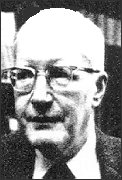
Hargest was a renowned specialist on U.S. foreign mails. His book, The History of Letter Post Communications Between the United States and Europe, 1845-1875 was published by the Smithsonian Institution in 1971 (reprinted in 1975). He received the Crawford Medal for this work in 1972.
Hargest wrote numerous articles on his research on U.S. postal history from the 1950s until his death. He was editor-in-chief of The Chronicle of U.S. Classic Postal Issues, journal of the United States Philatelic Classics Society, edited the transatlantic mails section of The Chronicle, and was named editor emeritus. Hargest received the Luff Award in 1980 for Distinguished Philatelic Research.
Baron Takaharu Mitsui
(July 10, 1900 – May 19, 1983) Japan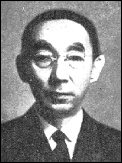
Baron Mitsui was the dean of Japanese philately. He was Japan's most celebrated philatelist and was one of philately's most prolific authors. Mitsui's first article was published at age 16 - about a Netherlands commemorative set issued in 1907. This began a writing career that continued for the rest of his life. Though his major field of interest was in Japanese philately, he developed a life-long interest in the stamps of Germany and Austria.
In 1923, the Baron founded Yubin kitte zasshi: The Japanese Journal of Timbrology. He contributed articles for nearly every one of the magazine's 48 issues until it ceased publication in 1927. In 1939 he was named first president of Nippon Yubin kitte kai (Japanese Postage Stamp Association), frequently writing in its journal, Yubin kitte: Japan Philatelic Magazine through 1948 when the society was dissolved. Then in 1950 he founded the Kitte Kenkyu Kai, (Institute of Philatelic Research, Japan) and began his third philatelic magazine, Kitte kenkyu (Philatelic Research), as its journal. For the next 30 years he wrote many articles for it. The last before his death was in late 1982 - the fifth part of a series on German seapost markings.
He not only wrote for his own journals, but for almost every other philatelic magazine in Japan. His books ranged from those for beginning collectors to specialized studies in both Japanese and European philately. One of Baron Mitsui's most important books, written in collaboration with Professor Yukio Masui of Keio University, is Sekai gunji yubin gaiyo (1939) (Outline of the Military Postal Systems of the World). This 400-page book contains the only published detailed study of the Japanese military postal service. In 1975 he wrote Fuiraterisuto no ashiato (A Philatelist's Footprints), a recollection of his long philatelic life. In this he mentions seven of his many books.
Baron Mitsui was an official advisor to the Japanese Communications Ministry and Postal Service Ministry for over 40 years. He was also Honorary Counselor of the International Society for Japanese Philately.
Baron Mitsui made a large and important gift of Japanese philatelic material to the Smithsonian Instituteion in honor of its opening of the Hall of Philately and Postal History in 1964. Included in the gift were original sketches and final designs of stamps executed by Kasori Teizo from 1923 to 1952.
After the Baron's death, his enormous collection of Japan and the world was donated to the Communications Museum in Tokyo.
Andrew Earl Weatherly
(July 10, 1895 – December 1981) North Carolina
Weatherly was an outstanding collector and student of Confederate States stamps and postal history. He was one of the early members and supporters of the Confederate Stamp Alliance, serving in many offices including that of president from 1946 to 1949.
His collection of Confederate States won gold medals both nationally and internationally. One of his favorite topics was the history of North Carolina before, during and after the Confederacy. His book, The First Hundred Years of Historic Guilford, 1771-1871 (1972) gave the social and postal history of this North Carolina town. One of his last articles, “A Confederate Find from ‘The Land of Eden’,” (Confederate Philatelist, 1973) was typical of his research - combining social history with postal history.
The CSA made him an “Honorary General” in 1950. At the time of his death, Weatherly was the society's Honorary Life President.
Return to Top



